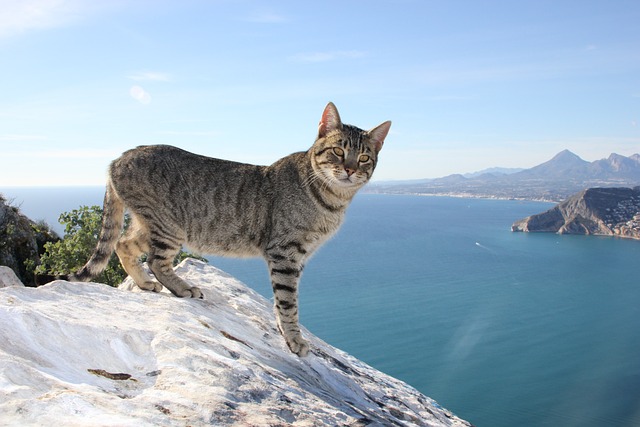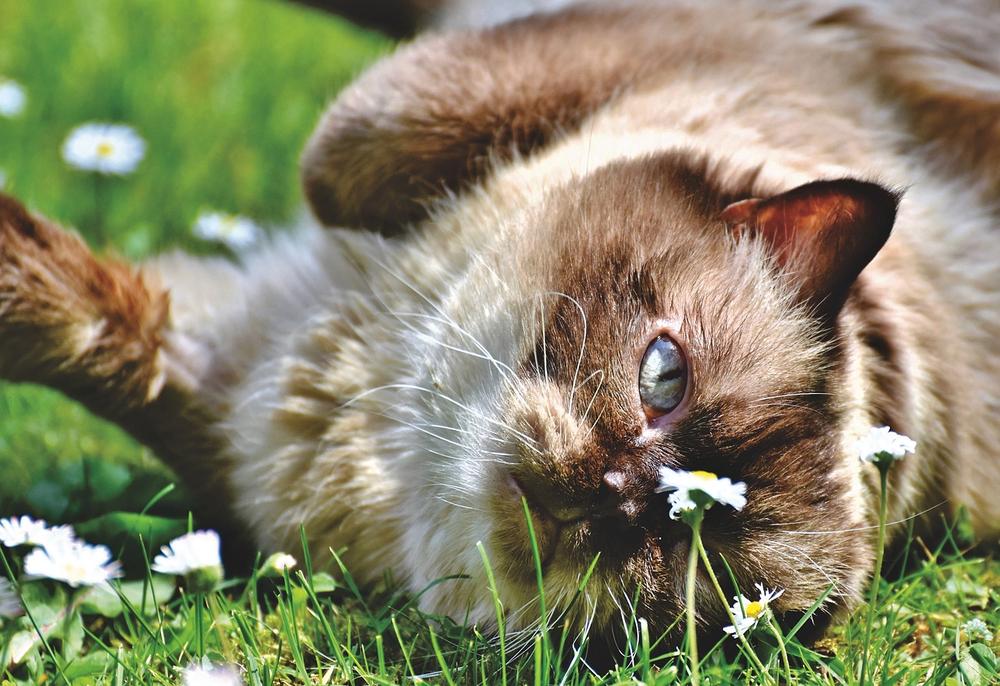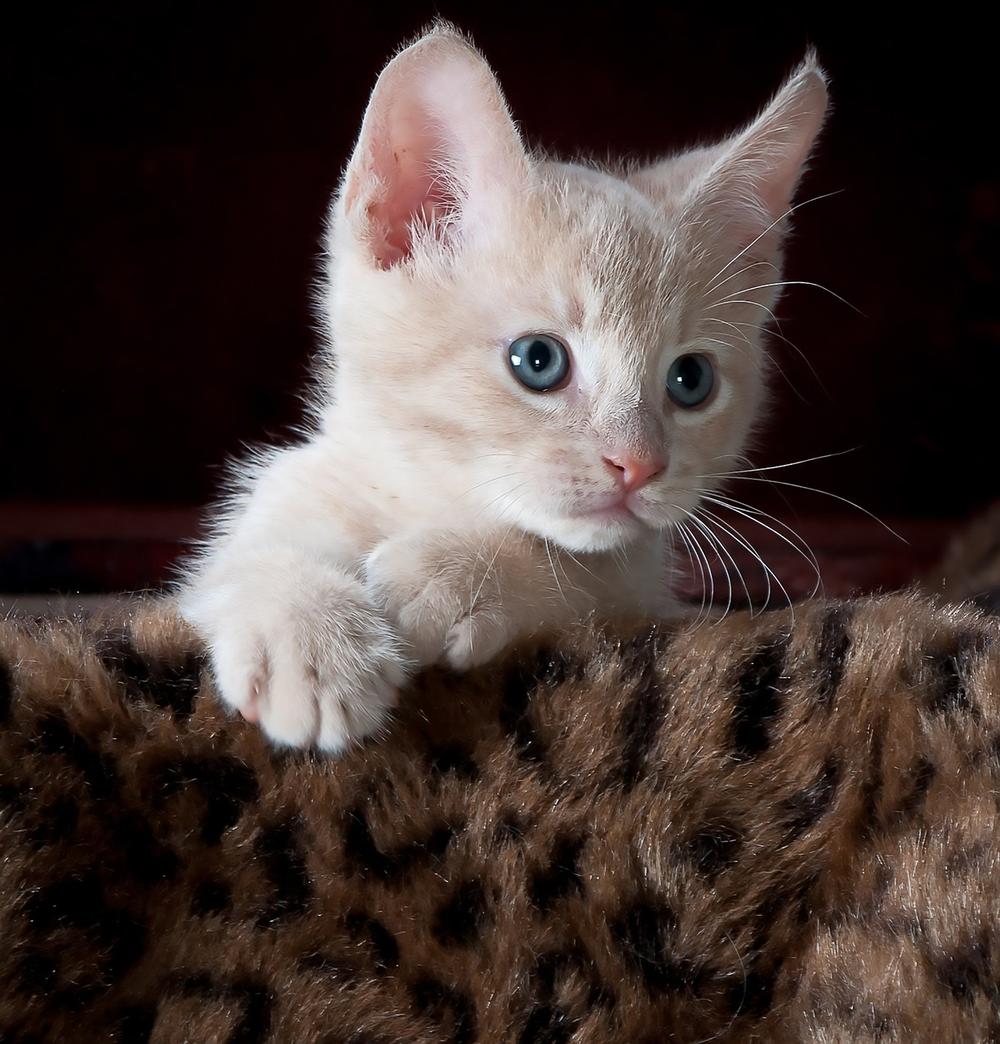When Do Cats Reach Full Size? (Revealed!)

Ever wonder when your beloved feline friend will reach their full size?
The anticipation can be unbearable, can't it? 😊
You're sitting there, watching your cat grow inch by inch, day by day, just dying to know when they'll finally hit their peak.
You're not alone.
We've all been there, anxiously waiting for our furry companions to fully mature.
But fear not, because today we're going to uncover the answer you've been longing for.
So buckle up, cat lovers, and let's embark on this exciting journey together.
Ready to dive in?
Let's get started!
Some Cat Breeds Grow Faster Than Others
Cats of different breeds have varying growth rates. While some breeds like Maine Coons can take up to 24 months to reach full size, others like Ragdolls may continue growing until they are 4 or 5 years old. Size and growth rate are breed-specific factors to consider when choosing a cat.
Different cat breeds grow at different rates, so if you're planning on getting a cat and want it to reach its full size quickly, this is something to consider.
Some cat breeds, like Maine Coons, take longer than others to reach full size, usually around 18-24 months or even more.
On the other hand, Ragdoll cats may continue growing until they are 4 or 5 years old.
Cats don't follow a one-size-fits-all approach when it comes to growth, which makes them unique and purrfect in their own way.
Now, let's talk about size.
Cats, just like humans, come in various shapes and sizes.
Maine Coons are particularly known for their large size and muscular build.
They can weigh up to 25 pounds and measure up to 40 inches in length. Impressive, right? 😺
However, not all cats are gentle giants.
For example, Singapura cats, the smallest breed, only weigh around eight pounds and are approximately eight inches tall and 12 inches long.

It goes to show that good things come in small packages too.
Each cat breed has its own specific size regulations determined by the International Cat Association.
With 71 recognized pedigree breeds, there is a great variety to choose from.
From Persian cats with their luxurious coats to the elegant Siamese cats, there's a perfect fit for everyone.
Though, that size plays a role in determining growth rate.
Generally, larger breeds take longer to reach full size compared to smaller ones.
Whether you have your sights set on a tabby or a Siamese cat, with some patience, your little furball will likely reach its full size within one to two years.
However, if majestic Maine Coons steal your heart, you may need to be prepared to wait a bit longer.
These gentle giants can take three to four years to reach their full size.
So, there you have it—an inside look at cats and their journey towards reaching their size potential. Each breed is unique, ranging from petite to majestic.
Just please bear in mind that once your cat reaches adulthood, all breeds tend to age at a similar rate.
Now, consider what size fits your lifestyle because cats come in all shapes and sizes, and they are wonderfully perfect just the way they are!
Main points I'll expand upon further down this article:
- Cats experience rapid growth within the first few weeks and continue to gain weight until around 16 weeks.
- Tooth replacement, sexual maturation, and reaching full size occur between 12-18 months.
- Socialization is crucial during the growth period as kittens undergo temperament and social-emotional changes.
- Most cats reach full physical and social maturity by 12 months, with larger breeds potentially taking longer.
- Cats go through various stages of growth and maturity, with adulthood generally reached at one year.
- Feeding habits change throughout growth stages, with kittens needing well-balanced, age-appropriate meals.
- Transition to adult food usually occurs around 10-12 months, based on factors like weight and maturity.
- Neutering or spaying should be done between five to six months old.
- Consult a veterinarian to determine the ideal weight and meal plan for your cat.
- Regular vet checkups are crucial for monitoring a cat's progress and maintaining a healthy weight and height.
Understanding the Growth Timeline of Cats
Do you ever wonder when your cute little kitten will grow up?
Well, let's explore the growth journey of cats together and find out.
During their early months, kittens go through an impressive growth spurt.
In just one week, they double in size.
I bet you can't even imagine how quickly they grow!
And the weight gain doesn't stop there.
It continues until around 16 weeks.
The growth timeline for cats is filled with various stages and important milestones.
One major milestone is tooth replacement.
At around three to four months old, kittens start losing their baby teeth and growing their permanent ones.
It's a bit like those awkward teenage years we've all experienced.
Watch out for those sharp little fangs!
Another significant milestone is sexual maturation. No, I'm not talking about kittens going on dates!
I mean when cats become capable of reproduction.
They hit puberty between five and nine months, depending on the individual.

But now, here comes the big question:
When do cats reach their full size?
Drumroll, please...
After 12-18 months, your furry friend should reach its full physical size. They officially become adults!
Actually, most cats achieve full physical and social maturity by 12 months.
However, larger breeds may take a little longer to catch up.
So remember, patience is key.
It's worth noting that although cats may continue to grow after the first year, the rate slows down significantly. It's like they've entered the calmness after the storm.
To sum it up -- cats go through various stages of growth and maturity.
They typically reach adulthood at around one year old, but don't rush them.
Adolescence can be quite a wild ride with rebellion, high energy levels, and sexual maturity kicking in. It can take up to four years for cats to reach their full size, and they are considered adults between 1-3 years old.
Now you have a better understanding of how cats grow over time. No need to worry about when your furry companion will reach its full size.
Just embrace every stage, from the tiny kitten phase to the majestic adult years.
Furthermore, as you continue to learn about the growth timeline of cats, you may find yourself wondering about other fascinating feline traits.
If you're curious as to why some cats have a big head, I invite you to explore my article on Why Do Some Cats Have a Big Head.
In this guide, I delve into the peculiarities of feline anatomy, offering insights into this intriguing characteristic.
Don't miss out on the opportunity to satisfy your curiosity and delve deeper into the captivating world of cats.
How Do Feeding Habits Change With a Cat’s Growth?
When it comes to a cat's feeding habits as they grow up, here are 9 things you should remember:
- You need to start giving kittens kitten food when they're around four weeks old so they get all the right nutrition.
- As your cats grow and go through different stages, you have to adjust their feeding accordingly.
- Make sure the meals you give them are well-balanced and suitable for their age.
- If a litter is too big, there might not be enough milk for each kitten, and that can affect their growth.
- Once your kitten hits around 10 to 12 months old, it's time to switch them from kitten food to adult food.
- But keep in mind, this timeline can vary based on how much your kitten weighs and how mature they are.
- When cats become seniors, they have specific nutritional needs that require higher-quality protein.
- Giving them more vitamins and antioxidants can also be good for them.
- It's important to regularly check your cat's weight to see if they're reaching their full size.
After your cat turns one year old, it's generally a good idea to feed them two meals a day.
But some cats might prefer having smaller meals more often.
You need to pay attention to what your cat prefers and make adjustments accordingly. ✨
To get straight to the point: Further down the blog post, I'll provide you with information on how to tell how old a cat is. So keep reading to find out all you need to know!
And now, let's delve deeper into the factors that determine a cat's full size and explore how genetics, neutering, and regular veterinary checkups can influence their growth and well-being...
Factors That Determine the Size of Your Kitty
Factors That Determine the Size of Your Kitty:

When it comes to cats and their size, a few factors come into play.
Here are some important things to consider:
- Genetics: DNA can have a big impact on your cat's size. Certain genetic conditions like dwarfism or bone deformities can result in smaller cats.
- Neutering/Spaying: Getting your cat fixed at the right age is crucial. Spaying prevents reproductive capabilities in female cats throughout their lives. It's best to do this when they're between five to six months old.
- Breed Type: Pedigree cats offer more predictability in terms of full size compared to mixed breeds. Mixed breeds can vary in size due to their diverse ancestry.
- Gender Differences: Males tend to be bigger than females. They grow larger and slower as they reach maturity. Neutering or spaying doesn't usually affect a male cat's growth.
- Geriatric Stage: Cats reach full maturity around 7-10 years old. But keep an eye out for weight changes, as obesity can lead to increased tummy mass. The geriatric stage begins around 15 years, which could involve weight gain or loss.
- Regular Vet Checkups: Regular visits to the vet are essential for monitoring your cat's progress and maintaining a healthy weight and height.
Understanding and managing your cat's size can be improved by taking these factors into account.
How to Tell How Old a Cat Is
Estimating a cat's age is all about observing and putting together the puzzle pieces.
One useful clue is the cat's weight, which can give you an idea of their age or maturity level.

When those tiny furballs hit around three months of age, they are often ready to spread their wings and leave their birth families.
But hold on tight because cats have impressive lifespans, with some defying the odds and reaching over twenty years old.
Keep an eye out for changes in behavior and fur when your feline friend hits the golden years, typically between 11-14 years old. Estimating a cat's age requires your detective skills, taking visual cues like weight into account alongside other factors.
And that wraps up today's article.
Before you leave, can I ask you a question? Did my blog post end up being useful for you? If it did, it would mean the world to me if you spread the word among your loved ones by sharing it. Just click on any of the social media icons for instant sharing. Thank you so much!
Talk soon,
-Sarah Davis